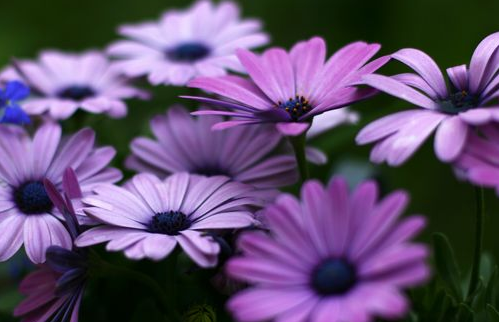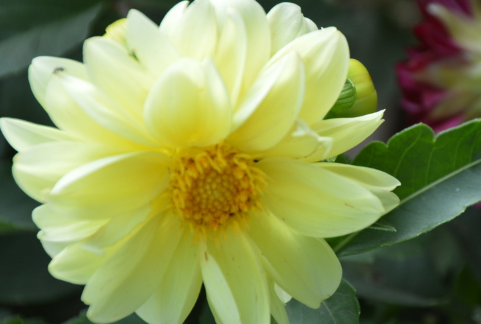The Culture method of Curly Dendranthes
1. Soil
Codonopsis lanceolata likes acidic soil rich in humus and can be mixed with rotten leaf soil, garden soil and sandy soil.

two。 Light
Convolvulus needs suitable light to grow well, the flowers are more beautiful, the sunshine in spring and autumn can meet the needs of plants, and the strong light in summer can be avoided. Shading net can be used to shade, and the sunshine in winter is short, which can be replenished artificially.
3. Temperature
Lily likes a warm environment, the suitable temperature for growth is 16-28 ℃, and it is more cold-resistant if it is afraid of high temperature. Therefore, it is necessary to spray water to cool down properly in summer, and the temperature in winter should not be lower than 2 ℃.
4. Moisture content
Curl Dan prefers to be dry, watering should be appropriate, generally to ensure that the basin soil is moist, the growth period can be properly watered, and the air is too dry can also be sprayed to keep moist.
Culture methods and matters needing attention of Curtis chinensis
Soil selection of culture method of lilac
Curl Dan likes fertile, humus-rich soil, requires good drainage, soil acidity is the best. Rotten leaf soil, garden soil and sandy soil can be mixed to make soil. when potted, in addition to the configured medium, you can also put rotten fertilizer or bone meal as base fertilizer. Before the soil is put on the basin, it needs to be sterilized.
Light and temperature
Light is a necessary condition for the growth of Solanum lanceolata. Only with reasonable light can it grow well, and the flowers bloom brightly, which does not affect the ornamental. Solanum lanceolata needs sufficient light, and insufficient light will make the plant grow poorly. In general, the light conditions in spring and autumn can meet the growth of lilac, but artificial light is needed in winter when the sunshine time is short. When it is hot and sunny in summer, to avoid direct sunlight, you can use a shade net to shade.
Temperature control is also very important. Curly Dan likes a warm environment, and the suitable temperature for growth is between 16 ℃ and 28 ℃. It is afraid of high temperature but more hardy, but the winter temperature should not be lower than 2 ℃.
Watering and fertilizing
Curly Dan likes to dry a little bit, more afraid of moisture, watering should be appropriate. Generally, you can keep the basin soil moist, but when the growth is booming and when it is relatively dry, it needs to be watered more. When the air is too dry, it is often necessary to spray water around the plant to increase the air humidity.
The requirement of fertilizer is not high, so it is necessary to supplement nutrients in the growing period to ensure growth, and appropriate fertilization in the early stage of flowering to ensure the quality of flowering. During the growth period, it can be dilute liquid fertilizer for 2-3 times, and at the initial stage of flowering, it can be some phosphate and potash fertilizer, 1-2 times.
Matters needing attention in the culture of Curly Dan change the basin
In order to make the curly Dan grow better, the basin needs to be changed once a year and replaced with new soil, which can be in October. And should often turn the flowerpot during the growth period to avoid the length deviation.
Diseases and insect pests
The main diseases of Lilium are Botrytis cinerea, blight and rust.
The Culture method of Lilium lilium L. the breeding method of Lilium lily
Lily, also known as lily, inverted lotus, tiger skin lily, perennial herbaceous bulbous plant. Like warm, dry climate conditions, but also more resistant to sunlight. Today, I will introduce to you the breeding methods and breeding methods of lilies.
Culture methods of Lilium lilies
Lily, also known as lily, inverted lotus, tiger skin lily, perennial herbaceous bulbous plant. Like warm, dry climate conditions, but also more resistant to sunlight. It grows luxuriantly in fertile sandy soil rich in humus and well-drained soil, with well-developed bulbs and colorful flowers. Suitable for nitrogen fertilizer, bean cake, vegetable cake, farm compost and nitrogen, phosphorus, potassium compound fertilizer are the best.
In the growing period, it is necessary to loosen the soil, weed, combined with watering and fertilization for mid-ploughing. Generally, diluted liquid fertilizer was applied 3 times during the growing period to promote the growth and development of the seedlings. When the bud is about to blossom, apply 1 Mel phosphorus and potassium fertilizer twice to ensure that the seedlings have sufficient nutrition in the bud and flowering stage, which can not only make the flowers large and bright, but also promote the development of bulbs.
The north should choose a sunny shelter, while the south can plant it in a slightly shaded place. The suitable planting time is from August to September. Apply enough base fertilizer one month before planting and turn the soil deeply. Compost and plant ash can be used as base fertilizer.
Potted plants should be carried out from September to October. The cultivated soil should be mixed with rotten leaf soil, sandy soil and garden soil at the ratio of 1:1:1, and the basin bottom should be fully mature compost and a small amount of bone powder as base fertilizer. The planting depth is generally about 2-3 times the diameter of the bulb.
Lilium lily does not have a high requirement for fertilizer, and it is usually appropriate to apply fertilizer at the beginning of spring growth and early flowering. Some foreign growers believe that lilies need more nitrogen and potassium fertilizer and should be applied every 10-15 days during the growing period, while the supply of phosphate fertilizer should be limited, because too much phosphate fertilizer will cause withered and yellow leaves. Phosphate fertilizer can be increased by 1-2 days at flowering stage.
In order to enrich the bulb, the residual flowers should be cut off in time after flowering to reduce nutrient consumption. Watering only needs to keep the pot soil moist, but it should be watered properly during the peak growing season and dry weather, and often sprinkle water around the flowerpot to improve air humidity. Pot soil should not be too wet, otherwise bulbs are easy to rot, potted lilies change pots once a year and replace them with new culture soil and base fertilizer. In addition, the flowerpot should be turned once a week during the growing period. Otherwise, the plant is easy to be too long, affecting the appearance.
The Propagation method of Lilium lily
The method of dividing plants can be used to propagate the lily. It is best to thaw the soil in February or March. Take the mother plant out of the flowerpot, shake off the excess potted soil, separate the roots as much as possible, and cut it into two or more plants with a sharp knife, each with a considerable root system. and its leaves are properly pruned to facilitate survival.
- Prev

How to raise blue chrysanthemum
1. Temperature the suitable growth temperature of blue chrysanthemum is somewhat different from that of other plants. The most suitable temperature for the growth of blue chrysanthemum is between 20 and 25 ℃. Too high or too low temperature will directly reduce the germination rate of seeds, so we should control its growth temperature when cultivating blue chrysanthemum.
- Next

Matters needing attention in sowing Xiaoli
1. Soil Xiaoli flower pot planting chooses loose, fertile, good drainage sandy soil, should not use clayey soil. two。 Temperature Xiaoli tenacious vitality, summer high temperature can also grow normally, but it is best to keep the temperature at 15-20 ℃, more conducive to seed germination. 3. Watering seeds should be watered in time after sowing
Related
- Fuxing push coffee new agricultural production and marketing class: lack of small-scale processing plants
- Jujube rice field leisure farm deep ploughing Yilan for five years to create a space for organic food and play
- Nongyu Farm-A trial of organic papaya for brave women with advanced technology
- Four points for attention in the prevention and control of diseases and insect pests of edible fungi
- How to add nutrient solution to Edible Fungi
- Is there any good way to control edible fungus mites?
- Open Inoculation Technology of Edible Fungi
- Is there any clever way to use fertilizer for edible fungus in winter?
- What agents are used to kill the pathogens of edible fungi in the mushroom shed?
- Rapid drying of Edible Fungi

